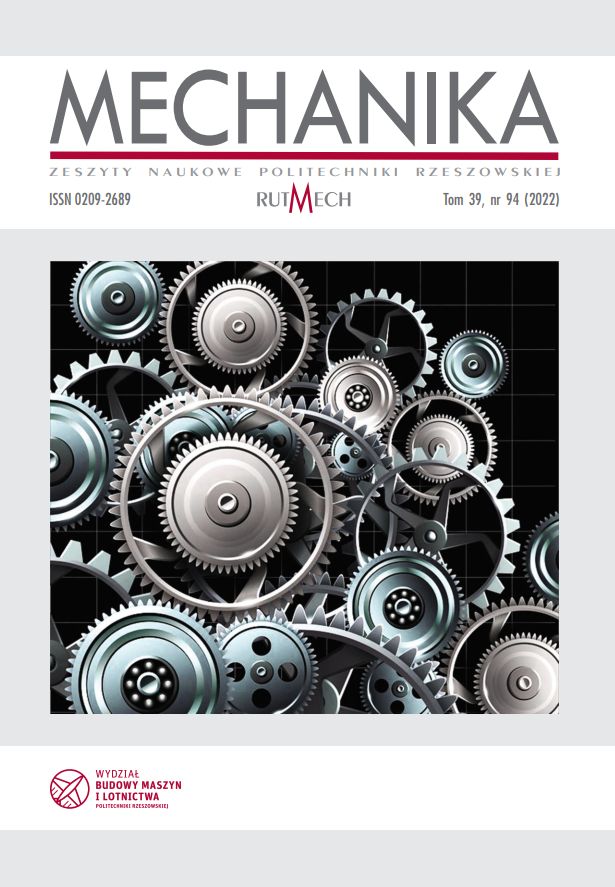Abstract
In this study a new ceramics tools with different groove distributions were designed and manufactured in order to enrich technological storage of joining thinwall structures and obtain sound joint with high quality of Alclad AA2024-T3 alloy of 0.5 mm in thickness. Four types of tools were tested, without grooves, with 1, 2 and 6 grooves. The tools are made of two materials. The straight shank is made from tungsten carbide and tool body made from ceramics strengthened with whiskers. The influence of technological parameters on the strength of FSW joints was tested by the Response Surface Methodology (RSM) and Analysis of Variance (ANOVA) method. The least durable weld is produced by a tool without grooves. The single and double flute tool produces a good quality weld over a wide range of tool speeds. It has been shown that the grooves on the tool shoulder significantly affect the quality of the obtained FSW joint.
References
Ahmed, M.M.Z., Barakat, W.S., Mohamed, A.Y.A., Alsaleh, N.A., & Elkady, O.A. (2021). The development of WC-based composite tools for friction stir welding of high-softening-temperature materials. Metals, 11, 285. https://doi.org/10.3390/met11020285.
Elangovan, K., & Balasubramanian, V. (2007). Influences of pin profile and rotational speed of the tool on the formation of friction stir processing zone in AA2219 aluminium alloy. Materials Science and Engineering: A, 459, 7–18. https://doi.org/10.1016/j.msea.2006.12.124.
Eshghi, A.T., & Lee, S. (2019). Adaptive improved response surface method for reliability-based design optimization. Engineering Optimization, 51, 2011–2029. https://doi.org/10.1080/0305215X.2018.1561885.
Kumar, K., & Kailas, S.V. (2008). The role of friction stir welding tool on material flow and weld formation. Materials Science and Engineering: A, 485, 367–374. https://doi.org/10.1016/j.msea.2007.08.013.
Takhakh, A.M., & Hussein, H.K. (2021). Experimental investigation and parametric optimization of FSW for the 2024-O aluminum alloy joints. IOP Conference Series: Materials Science and Engineering, 1094, 012134. https://doi.org/10.1088/1757- 899X/1094/1/012134.
Thomas, W.M., Nicholas, E.D., Needham, J.C., Murch, M.G., Temple-Smith, P., & Dawes, C.J. (1995). Friction welding. US Patent USP1995105460317.
Vahdati, M., Moradi, M., & Shamsborhan, M. (2020). Modeling and optimization of the yield strength and tensile strength of Al7075 butt joint produced by FSW and SFSW using RSM and desirability function method. Transactions of the Indian Institute of Metals, 73, 2587–2600. https://doi.org/10.1007/s12666-020-02075-8.
Węglowski, M.S. (2018). Friction stir processing – State of the art. Archives of Civil and Mechanical Engineering, 18, 114–129. https://doi.org/10.1016/j.acme.2017.06.002.
Zhang, C., Qin, Z., Rong, C., Shi, W., & Wang, S. (2020). The preliminary exploration of micro-friction stir welding process and material flow of copper and brass ultrathin sheets. Materials, 13, 2401. https://doi.org/10.3390/ma1310240.


